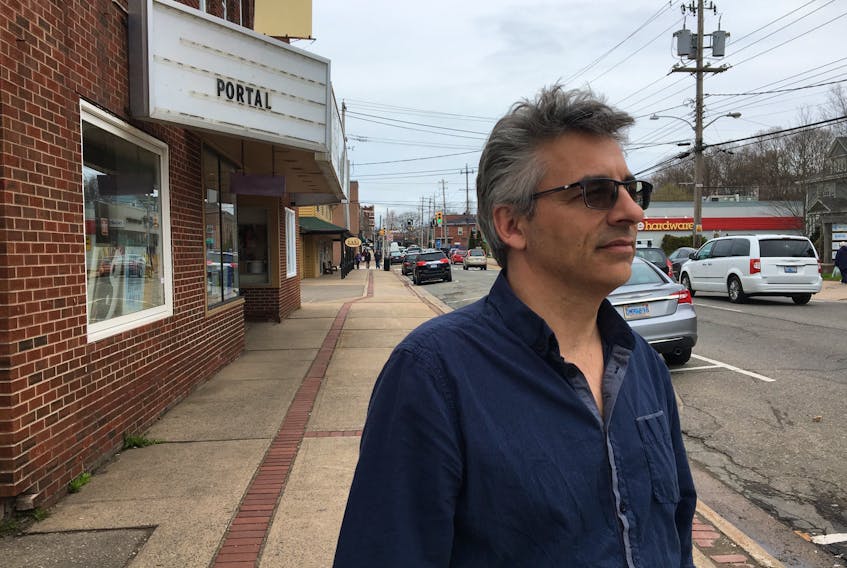KINGS COUNTY – Russ Sanche is seeing trends he experienced while working to fight human trafficking abroad happen here in Kings County.
That trend is the disappearance of children or youths with a lack of identity and support system who slip through the cracks of the social justice system.
And while Sanche and Halifax RCMP human trafficking coordinator Cpl. David Lane agree anyone can be groomed for human trafficking, they also both state these youths are more at risk because their vulnerabilities make them easier to target.
“These youths are at risk of disappearing and being swept up by this – it’s textbook, and it’s a growing issue,” said Sanche.
More on our human trafficking series:
Our youth series:
- ‘I’ll keep on fighting’: How homelessness spawned addictions, identity challenges for young Kings County woman
- The invisible homeless: Emergency shelter not only solution to youth homelessness in Kings County
- Safe spaces and sense of belonging vital for LGBTQ+ youth in Annapolis Valley
The tip of the iceberg: Sanche
Lane confirmed in an email statement that there have been two RCMP investigations into human trafficking in Kings County since 2014.
The crime, which the officer said is difficult to track, is often larger than numbers show, since data is hard to collect and the crime difficult to prosecute.
Cpl. David Lane offered several signs for people to be aware of as signs of human trafficking:
- Victims are often 'branded' with a tattoo or other marking with their trafficker's name to show ownership
- Victims are moved often and will have unexplained income (i.e. brand-name hand bags, high-end clothing, vehicles, etc.)
- Victims will not want to talk to their family about the relationship they have with their trafficker.
- In the beginning, the victims may disappear with their trafficker 'boyfriend' for days at a time.
- The family may never, or just very briefly meet their daughter's trafficker.
- Victims may not have access to identification or bank accounts.
- Victims may be hard to get in touch with of and not free to talk when they do call home.
Sanche believes two investigations represents just “the tip of the iceberg” – a problem so difficult to follow it remains hidden.
“We’ve heard the trafficking route may start in rural areas, then extend from Halifax to Moncton and to Montreal, but don’t know specifically how this impacts us locally,” he said.
Lane described how at-risk youth facing challenges at home, school, or even with themselves who have pre-existing trauma in their lives are prime victims for traffickers looking for a vulnerable target.
Common methods of targeting occur online through social media, and in person at locations like group homes, schools and malls.
“These predators will…recruit them into the sex trade by promising them a better life than what they are currently experiencing,” said Lane.
A core group at risk of being trafficked
The Homeless No More strategy to eliminate youth homelessness in the Annapolis Valley over the next 10 years was created by The Portal, Kentville’s youth outreach centre where Sanche works as director, and found an average of 70 youth are homeless on any given night in Kings County.
It also found 38 per cent of these youths are exploited for sexual work and other forms of illegal labour.
Sanche says this demographic of homeless youths that have lost their formal identities become even more of a target when they are disengaged and without a home base.
He recalls an instance just three weeks ago when a female previously supported by the Portal found herself in Moncton with her boyfriend, staying amongst a group of men who began discussing how she could make money by “working” in Montreal.
Sanche was working to get her back here and just before he called the RCMP, she called him and told him she’d returned safe.
Another instance two years ago involved a 15-year-old male who’d met a much older American man online who then traveled here, booked a hotel room, and convinced him to visit.
“This young man was sexually assaulted by this older man. It happened right here, under the noses of everyone,” he said, mentioning other youths he’s worked with that have traded sex for a place to stay.
“I can’t say any of these youths were trafficked, but it’s a slippery slope from this to becoming a victim.”
Problem not just abroad, but in Canada too
Lane wants the public to realize most people trafficked in Canada are done so within our domestic borders. Those smuggled in internationally represent a small piece of this large problem, he says.
Reports Lane has studied indicate human trafficking has become the second-most common organized crime activity in the world, second only to illicit drug sales.
Victims are constantly on the move, pushed by their trafficker through different towns across a region or the entire country on a regular basis.
“This makes it difficult for the police to track the crime, as well as for the victims to develop a support system to help them out of their situation,” he said.
Lane says trafficking victims are often forced to work in strip clubs, massage parlours and can be made to advertise themselves online as well, and that they often don’t realize they are being victimized.
“Often, the victims…believe they are in a relationship with their trafficker. Other times, [they] are too afraid to seek help,” he said.
Awareness: a silver lining
A small positive note to consider is the growing awareness of the public on the threat posed by human trafficking across the country, says Lane.
While reports of the crime’s frequency are increasing, so too is the amount of people informed on what to look for in identifying the problem.
When compared to what people knew on the subject in 2005 – the year human trafficking legislation was introduced into the Criminal Code – the increase in understanding is clear.
This is not the only positive note, says Dale, who added that police are working with non-government organizations to identify and fight human trafficking, and “are constantly attempting to improve their response” to the problem.
Sanche also looks to small changes that could mean significant improvements in Kings County, like changing how authorities process victims’ disclosures of sexual assaults or trafficking.
“The youths who’ve experienced previous trauma don’t want to disclose. To fix this, we’ve got to change the system and make that first interaction comfortable,” said Sanche.
“This decreases the chance of them becoming marginalized and later victimized. We make sure they are heard and that they have support – that then ensures they have a name, and they don’t disappear.”
SIDEBAR
“Anyone can become a victim of human trafficking,” says Halifax RCMP Cpl. David Lane, the city’s human trafficking response coordinator.
The problem, which has become the second-largest common organized crime activity, is a hard one to detect for many reasons, chief among them that the relationship between the trafficker and their victim can resemble a boyfriend/girlfriend relationship, according to Lane.
“Although your daughter/son may appear to be choosing this lifestyle, they are not choosing it at all – they are being forced,” he said.
He also describes how victims become involved by being tricked into the sex trade by their pimps, who refer to it all as “The Game.”
Lane urges parents to talk to their children about the threat of human trafficking to make them aware of what to look for and where to get help if they feel concerned about a person who makes them uncomfortable.
“Once they become involved, victims are being exploited and controlled, making it difficult for them to leave,” said Lane.
Anyone can report suspicious incidents to your local police detachment or call the Nova Scotia Human Trafficking Tip Line: (902) 449-2425.









